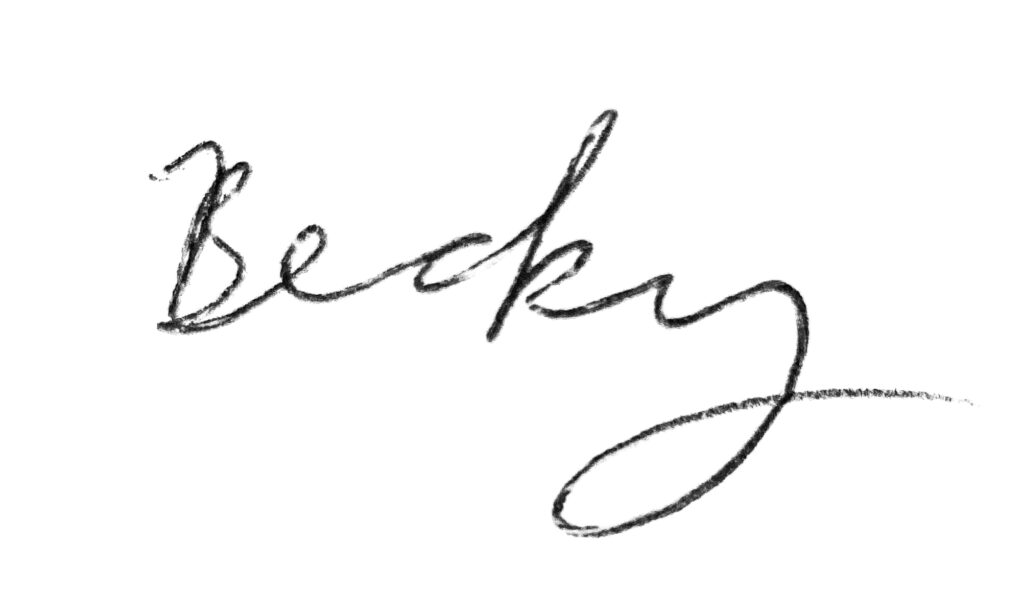Dear Osa friends,
With Mother’s Day this weekend, I am reflecting this week both on the ways we have been nurtured by our mothers and also on the ways in which we can all continue to “mother” ourselves, and I’m also cracking open a discussion on why rest is a necessity, not a luxury. Enjoy!
Mothering ourselves
Those of us lucky enough to have a good mother when we were young (and I think that most of us were!) received a foundation of nurturing that provides us with some idea of how to continue the process of fostering growth in ourselves as adults; however, in our full and hustling lives it is very easy to lose touch with this nurturing presence, which I think of as a sort of vitamin for our souls. And yet, mothering ourselves is essential to making progress on our goals. Let me explain why.
In the world of functional and integrative medicine, clients/patients are in the business of doing hard things, because it’s these hard things–real lifestyle change–that translate to progress. Recently, a friend reminded me of a memorable book phrase we knew when we were young and which illustrates this difficulty: “can’t go over it, can’t go under it, gotta go through it.” Of course, we’re not talking about “bear hunts” here, but rather committing to any number of therapeutic dietary interventions, or avoiding foods to which you are sensitive, or starting a training program to build muscle or increase aerobic capacity, or employing a bedtime routine or a stress management technique, or making time to meet with healthcare providers, or perhaps undergoing testing to help get to the root cause of your concerns, which can be so very stressful.
While we can experience positive effects fairly soon after implementing the right lifestyle changes, they all typically require long-term commitment to reap the full benefits and prevent relapse or return of signs and symptoms. Long term commitment is not something that we “muscle” or “will power” our way through–using these forcing is ultimately a form of self sabotage. (“Yeah, I tried it, but it just didn’t work for me….” is what I hear someone saying when they mean that it was not sustainable for them). It might sound counterintuitive, but when we are doing hard things, we need to simultaneously soften ourselves to maintain both the flexibility and the availability of rest that allows for personal growth. This is what I mean by mothering ourselves. But why exactly do we need to do this?
When I say “soften,” I mean a few things: being flexible and compassionate with ourselves, and both making room for and welcoming in rest. The number one reason that this can lead to better health outcomes is:
Gains happen when we’re resting
That’s right! Whether we’re talking about exercise, nutrition, or really any lifestyle change, the real fruits of our endeavors are realized not when we are engaged in the activity itself–exercising or preparing those nutritious foods or practicing breath work–but in the time afterward, when our bodies repair those muscles, build new mitochondria in our cells, digest and assimilate nutrients as well as assimilate newly learned skills, which is necessary for these skills to become habits. This can be a tough concept to really take to heart, possibly due to a ubiquitous sense of time scarcity or personal identification with a level of productivity narrowly defined as time spent outwardly doing. So, it is important to me that you, as a member of the Osa community, understand that your body is indeed doing something when you are resting–it’s doing an incredible number of somethings! Memory consolidation1, neuronal growth2, DNA repair3, brain repair4, muscle growth and metabolic pathway maintenance5, and cell turnover6, just to name a few. If we’re not resting or not resting enough, we are short changing our efforts to heal and to make progress.
How much rest is enough? This is an answer only you can give yourself, and it is likely to change over time as well. Improving your health with lifestyle medicine will help you make the most of your rest. If you do find that you are requiring so much rest that you have trouble getting out of bed in the morning or cannot complete daily tasks of living, this is certainly an issue to bring up with your healthcare providers, and there is so much we can do with personalized nutrition and lifestyle to improve fatigue.
The choice to care for ourselves with enough rest may not come easily, like so many counter-cultural choices. Below, I’m sharing with you a couple of strategies that I’ve used to welcome and make space for rest in my life:
1. Call on your guide
You’re tough, you can handle a lot, and you chart your own path–why would you need a guide? Well, my short answer is that it’s because we can’t always trust our thoughts, and we aren’t always our own best companions either. Even the most self-assured among us can still feel unsure or alone at times, or bullied by ingrained, subconscious patterns of thought which hold us back from personal and physical healing and growth. While outer support is great to have, it’s kind of the icing on the cake–ultimately the motivation to continue on your healing journey, to continue doing the hard things (including RESTING) must come from within yourself. For me, being all alone with myself and my own thoughts about my potential for success in whatever I’m doing can be pretty discouraging sometimes. Maybe you can relate. I have found calling upon my guide to be an indispensable practice because it gives me the reassuring presence I need to sustain the journey and a soft landing place when I am weary or unsure.
My personal guide and protector is, of course, a bear (which is why I have made the bear the namesake of my practice), and my bear has at times carried me, surrounded me with protection, and walked beside me. Although the bear has always been my spirit animal, my practice of actively called upon her didn’t take root until, in a time of need, I read James Gordon’s wonderful book, Unstuck, in which he uses self-guided imagery to assist the reader toward meeting their “inner guide”. Your guide might be an animal, or it could also be a person, or simply a presence, such as a light or a star. Another resource which helped me meet my inner guide was Kristin Neff’s guided visualizations entitled “Fierce friend” and “Compassionate friend” which, as I’ve mentioned previously, can be found at www.self-compassion.org. Both of these resources involve creating through visualization a safe place where you can meet your inner guide. If this is a new idea to you, I invite you to open yourself up to these practices and see what grows. I really can’t recommend them enough.
2. Realize the fallacy of time management
It is tempting to believe that if we can *just* do things more efficiently and move a little faster and use the right kind of planner and maybe take a few well-reasoned shortcuts, we will have time for everything. Or, everything that matters, at least. And yet, we often describe the times that feel most important to us as being outside the bounds of time, or as if time stood still. And we can happily spend lots of time on tasks that could be done more quickly because what is important is who we are with, or perhaps the conversation that happens during the task, such as cooking with a loved one or teaching a child to do something new. So on some level, we understand that time isn’t everything. Oliver Burkeman, author of Four Thousand Weeks, has written at length about this fallacy of time management, if you’re curious to really dig in to this topic.
The truth is, we don’t have time for everything. Those of us who care a lot about a lot of things will not ever feel that we have sufficient time to tend to all of those things. We can rush more and continue to optimize and push ourselves to higher and higher levels of efficiency…. until we fall very ill or have a mental breakdown or until we’re just fed up of approaching our life like it was a mathematical problem to be solved.
The alternative is accepting that in order to have time for things we care about, we have to also let go of some other things that we care about. It’s not “just”, or maybe not even mostly, about saying “no” to things we don’t want to do–that’s easy enough. It’s about recognizing that we essentially need to release our hold on some things that we actually really want to do or really do care about.
We can think of this in terms of big picture things like career choices, family, hobbies, and volunteer work, and also in terms of day-to-day tasks. Oftentimes a very impactful thing we can do for our health is to remove one or two things from our to-do list and, instead, take that after lunch walk or call that friend we’ve been meaning to reach out to or get to bed 15 or 30 minutes earlier. Sleep is one of the “low-hanging fruits” that I look to when thinking about potential lifestyle interventions for clients. Sometimes getting more–and better–sleep is the lifestyle change that can give someone the most bang for their buck, so to speak, in terms of benefits received for investment in lifestyle change.
How we spend time is difficult discernment, no doubt (more reason to call on your guide, by the way). Acceptance of the finitude of our time is, I think, a sizeable piece of embracing what is, in the words of Jon Kabat Zinn, the “full catastrophe” of our lives. To be able to sit with this difficult human reality, I think an important thing to remember is–again–the centrality of self compassion.
How can we know if we are spending time on the “right” things or in the “best” way? We can’t ever be 100% sure. But we can call on our guides, accept the “full catastrophe” of our lives, and take the next best step we can.

References
- Rasch, B., & Born, J. (2013). About sleep’s role in memory. Physiological reviews, 93(2), 681–766. https://doi.org/10.1152/physrev.00032.2012 https://www.ncbi.nlm.nih.gov/pmc/articles/PMC3768102/
- Mutti, C., Misirocchi, F., Zilioli, A., Rausa, F., Pizzarotti, S., Spallazzi, M., & Parrino, L. (2022). Sleep and brain evolution across the human lifespan: A mutual embrace. Frontiers in network physiology, 2, 938012. https://doi.org/10.3389/fnetp.2022.938012 https://pubmed.ncbi.nlm.nih.gov/36926070/
- Zada, D., Bronshtein, I., Lerer-Goldshtein, T. et al. Sleep increases chromosome dynamics to enable reduction of accumulating DNA damage in single neurons. Nat Commun 10, 895 (2019). https://doi.org/10.1038/s41467-019-08806-w https://www.nature.com/articles/s41467-019-08806-w
- Reiter, R. J., Sharma, R., Cucielo, M. S., Tan, D. X., Rosales-Corral, S., Gancitano, G., & de Almeida Chuffa, L. G. (2023). Brain washing and neural health: role of age, sleep, and the cerebrospinal fluid melatonin rhythm. Cellular and molecular life sciences : CMLS, 80(4), 88. https://doi.org/10.1007/s00018-023-04736-5 https://pubmed.ncbi.nlm.nih.gov/36917314/
- Song, J., Park, S.J., Choi, S. et al. Effect of changes in sleeping behavior on skeletal muscle and fat mass: a retrospective cohort study. BMC Public Health 23, 1879 (2023). https://doi.org/10.1186/s12889-023-16765-7 https://bmcpublichealth.biomedcentral.com/articles/10.1186/s12889-023-16765-7
- Elkhenany, H., AlOkda, A., El-Badawy, A., & El-Badri, N. (2018). Tissue regeneration: Impact of sleep on stem cell regenerative capacity. Life sciences, 214, 51–61. https://doi.org/10.1016/j.lfs.2018.10.057 https://pubmed.ncbi.nlm.nih.gov/30393021/
